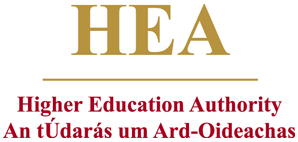Bhí beirt fhear - Maighréad Ní Dhomhnaill
Recording: [Download audio file]
[Download AIFF audio file (of processed ‘user’ version)]
[Download AIFF audio file (of archive version)]
Transcript
Bhí beirt fhear ina gcónaí ar an bhaile s'againne uair amháin, fear acu a rabh cuid mhór ba aige agus fear eile, ní rabh aige ach aon bhó. Ní rabh an bheirt ag teacht le chéile go han-mhaith. An fear seo a rabh cuid mhór ba aige, mharaigh sé aon bhó an fhir eile. Níor chuir sin aon (phló) ar an fhear, ach bhain sé an craiceann den bhó agus d'imigh sé go Leitir Ceanainn leis.
Nuair a bhí sé taobh amuigh den bhaile mhór smaoitigh[1] sé go rabh traidhfil phíosaí leathchorónach ina phóca agus chuir sé isteach sa chraiceann iad. Nuair a chuaigh sé go dtí an siopa fuaigh sé isteach. D'fhiafraigh fear an tsiopa dó goidé a bhí a dhíobháil air.
"Ó," ar seisean, "tá craiceann iontach luachmhar anseo le díol agam, nó gach uile bhuille a bhuailfeas tusa air tuitfidh píosa leathchorónach amach as."
Fuair fear an tsiopa bata mór. Bhuail sé buille ar an chraiceann is thuit píosa leathchorónach amach. Bhuail sé an dara buille air is thuit píosa eile. Bhuail sé an tríthú[2] buille air agus thuit píosa eile. Ansin chreid sé caint an fhir. Cheannaigh sé an craiceann uadh[3]. Agus fuair sé an-luach air, a chéad oiread is a gheobhaidh a'n[4] chraicne coitianta eile.
Nuair a tháinig sé 'na[5] bhaile fuaigh an scéal amach fá mar d'éirigh leis. Agus an fear seo a rabh cuid mhór ba aige, dúirt sé leis féin, "Beidh mise inchurtha leis." Mharaigh sé a rabh... Mharaigh sé an méid ba a bhí ina sheilbh. Agus d'imigh sé go Leitir Ceanainn leis na craicne ach ní bhfuair sé pínn orthu ach a oiread le duine coitianta ar bith eile. Agus sin mar a cheannaigh sé a chuid drochbhéasaí.
Translation
There once were two men living in our townland, one of them who had many cows and another who only had one cow. The two weren't getting along very well. The man who had many cows killed the other man's only cow. That didn't bother(?) the man, and he took the hide off the cow and he went to Letterkenny with it.
When he was outside of the town he remembered that he had a few half-crown pieces in his pocket and he put them into the hide. When he came to the shop he went in. The shopkeeper asked him what he wanted.
"Oh," he said, "I have a very valuable hide here to sell, for every time you hit it a half-crown piece will fall out of it."
The shopkeeper got a big stick. He hit the hide and a half-crown piece fell out of it. He hit it a second time and another piece fell. He hit it a third time and another piece fell. Then he believed what the man was saying. He bought the hide from him. And he got a very good price for it, a hundred times what any other hide will fetch.
When he came home the story spread about how he got on. And the man who had a great many cows said to himself, "I will be as good as him." He killed all... He killed all the cows in his possession. And he went to Letterkenny with the hides and he didn't get a penny more for them than any other common person. And that is how he bought his bad habits.
Footnotes
= smaoinigh. Cf. Maeleachlainn Mac Cionaoith, Seanchas Rann na Feirste (Dublin, 2005), 171. (Back)Cf. Dónall Ó Baoill, An Teanga Bheo: Gaeilge Uladh (Dublin, 1996), 113. (Back)
= uaidh. Cf. Mac Cionaoith, op. cit., 180. (Back)
= aon. (Back)
= chun an. (Back)
Commentary
This story appears to be a version of an international folktale, ATU 1535 The rich and the poor farmer. In many versions of the story, the man receives great value for the hide by being bribed to keep his mouth shut after seeing an innkeeper's wife commit adultery. See Hans Jorg Uther, The types of international folktales: a classification and bibliography (3 vols, Helsinki, 2004). The current version employs a different international folklore motif to account for his good fortune, namely K111.1 Alleged gold-dropping animal sold. See Stith Thompson, Motif-index of folk literature (rev. and enlarged ed., 6 vols, Bloomington, Ind., 1955-8). The story is extremely popular in Ireland, with a great number of versions having been recorded from all four provinces. In Irish versions, it is often combined with, or borrows motifs from, ATU 1539 Cleverness and gullibility. See Seán Ó Súilleabháin and Rieder Th. Christiansen, The types of the Irish folktale (Helsinki, 1968).
Title in English: There were two men
Digital version published by: Doegen Records Web Project, Royal Irish Academy
Description of the Recording:
Speaker:
Maighréad
Ní Dhomhnaill from Co.
Donegal
Person who made the recording:
Karl Tempel
Organizer and administrator of the recording scheme: The Royal Irish Academy
In collaboration with: Lautabteilung, Preußische Staatsbibliothek (now Lautarchiv,
Humboldt-Universität zu Berlin)
Recorded on 02-10-1931 at 11:00:00 in
Courthouse, Letterkenny. Recorded on 02-10-1931 at 11:00:00 in
Courthouse, Letterkenny.
Archive recording (ID LA_1250d1, from a shellac disk stored at the
Royal Irish Academy) is 01:30 minutes
long. Archive recording (ID LA_1250d1, from a shellac disk stored at the
Royal Irish Academy) is 01:30 minutes
long.
Second archive recording (ID LA_1250b1, from a shellac disc stored in
Belfast) is 01:30 minutes long. Second archive recording (ID LA_1250b1, from a shellac disc stored in
Belfast) is 01:30 minutes long.
User recording (ID LA_1250d1, from a shellac disk stored at the Royal
Irish Academy) is 01:28 minutes long. User recording (ID LA_1250d1, from a shellac disk stored at the Royal
Irish Academy) is 01:28 minutes long.





